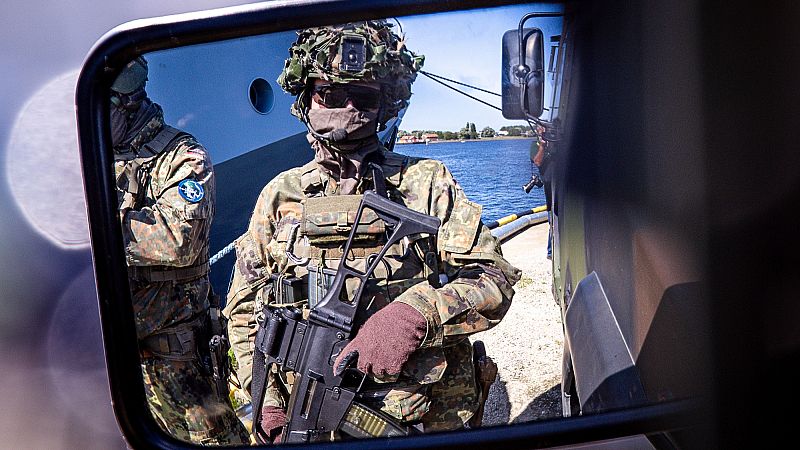NATO defence ministers meet to talk plans on tackling drone incursions

NATO defence ministers are meeting on Wednesday for the first time since a significant series of drones and Russian jets violated European airspace in recent weeks.
High on the agenda is the lack of cohesion amongst allies about a plan on how to best respond to the incursions, parts of which NATO Secretary General Mark Rutte said were being developed in cooperation with the European Union.
Rutte told the press on Wednesday morning before the meeting kicked off that the two were joining forces in an effort to create a “drone wall” – an idea promoted by European Commission chief Ursula von der Leyen – which would protect the member states from further drone incursions into their airspace.
According to Rutte, the blocs have different responsibilities: while NATO was in charge of the military side of things, the EU was providing political and financial backing.
Yet, according to several officials, the work of NATO's Supreme Allied Commander (SACEUR), US Army Lt Gen Alex Grynkewich, who is responsible for devising NATO's response to the incursions, is being hampered by the national government's bureaucratic processes.
It's not unusual for a 32-nation alliance to differ on approaches, but sources say the long list of national caveats is causing some frustration.
The national restrictions are creating inconsistencies in attaining the necessary standard rules of engagement, several sources have said.
SACUER is said to want to use military aircraft in any part of the territory amid the ongoing violations in the eastern flank.
"The more national caveats that are on, especially our fighter jet assets, the harder it is for SACEUR,” US envoy Matthew Whitaker told journalists.
'National caveats are making us less effective'
In the run-up to the meeting on Wednesday, Rutte openly criticised the lack of uniformity among allies.
“We still have some of these national caveats, and they are holding us back. They are making us less effective,” Rutte told lawmakers in Slovenia on Monday.
Last month, 19 drones flew into Polish airspace on one evening alone, which were shot down or crashed as NATO scrambled its jets in response.
Other countries, such as Estonia, Romania, Finland, Latvia, Lithuania and Norway, experienced similar incursions. In Lithuania, a Russian jet incursion into its airspace also triggered NATO fighters to scramble.
At the same time, a series of mysterious drone appearances above major airports plagued the Scandinavian countries in recent weeks.
Although the specifics around the drone wall have not been fully revealed, the European Commission earlier said that it would consist of a layered network of sensors, electronic warfare jammers and kinetic devices positioned across the entire 27-member bloc.
Some member states, like Denmark, have expressed reservations over their capabilities to tackle drone incursions, despite fresh investments into air defence and other equipment.
Rutte has previously emphasised that NATO needs to specifically increase its air defence spending by 400% in the coming years. EU leaders have broadly supported the "drone wall" initiative, despite some concerns that it might be costly to implement and operate.
The gathering takes place ahead of a crucial US decision on whether to supply long-range Tomahawk missiles to Ukraine as it continues to defend itself from Russia's all-out war, now in its fourth year.
A concrete decision on the Tomahawks is expected on Friday at a meeting between US President Donald Trump and Ukrainian President Volodymyr Zelenskyy in Washington.
Some NATO officials, who spoke to Euronews on condition of anonymity, appear cautiously optimistic of a breakthrough from the White House.
"The relationship between (Trump and) Zelenskyy is improved", said one official.
Another official referred to potential momentum deriving from the recent success in delivering a ceasefire in the Middle East, along with a hostage and prisoner exchange between Israel and Hamas.
Today

